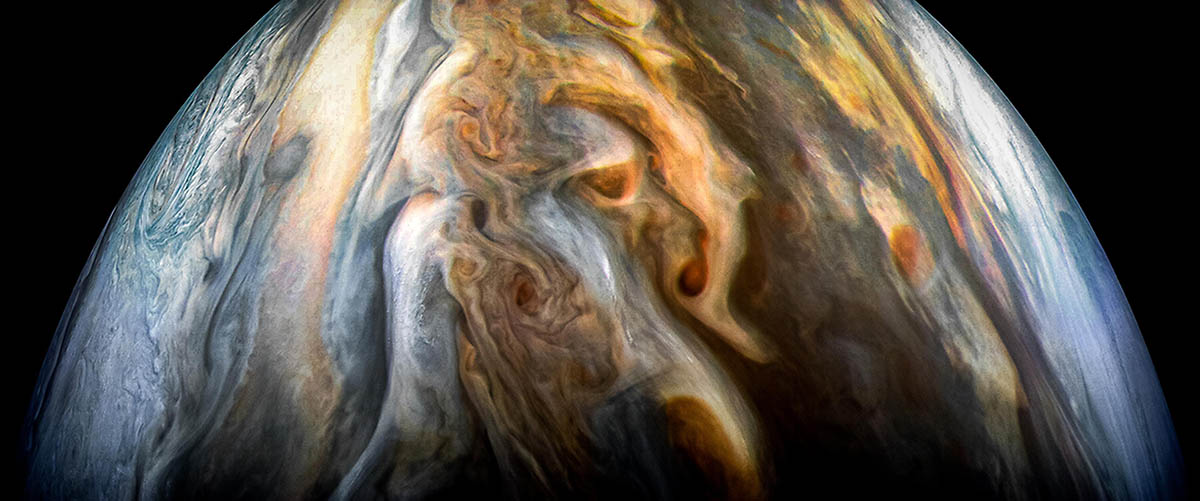The JunoCam imager aboard NASA’s Juno spacecraft captured this image of Jupiter’s southern equatorial region on Sept. 1, 2017. The image is oriented so Jupiter’s poles (not visible) run left-to-right of frame. (NASA/JPL-Caltech/SwRI/MSSS/Kevin M. Gill)
Home The JunoCam imager aboard NASA’s Juno spacecraft captured this image of Jupiter’s southern equatorial region on Sept. 1, 2017. The image is oriented so Jupiter’s poles (not visible) run left-to-right of frame. (NASA/JPL-Caltech/SwRI/MSSS/Kevin M. Gill) The JunoCam imager aboard NASA's Juno spacecraft captured this image of Jupiter's southern equatorial region on Sept. 1, 2017. The image is oriented so Jupiter's poles (not visible) run left-to-right of frame. (NASA/JPL-Caltech/SwRI/MSSS/Kevin M. Gill)



